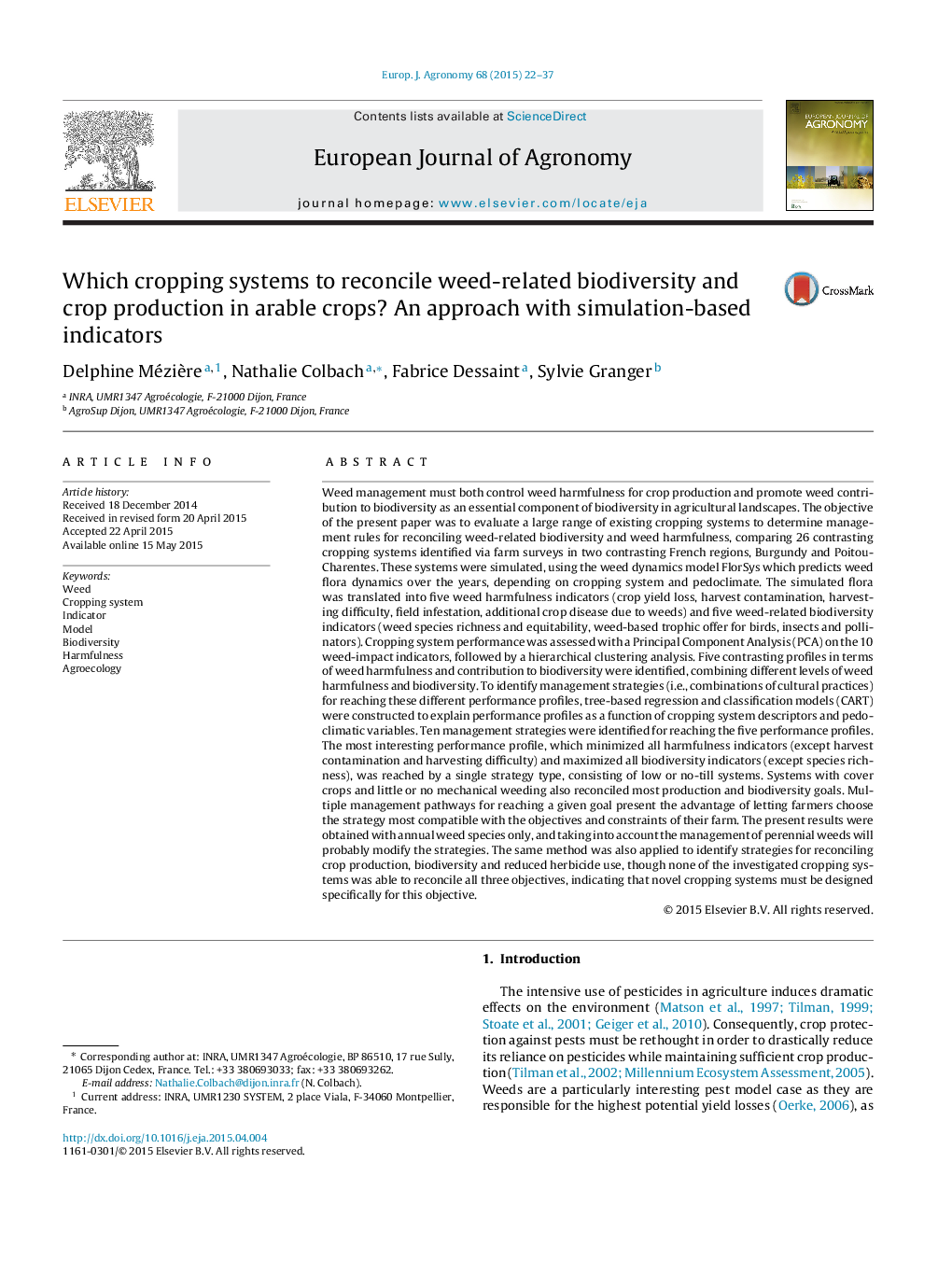| Article ID | Journal | Published Year | Pages | File Type |
|---|---|---|---|---|
| 6374269 | European Journal of Agronomy | 2015 | 16 Pages |
â¢Cropping systems from farm surveys were simulated with the weed dynamics model FlorSys.â¢Their performance was evaluated with indicators of weed harmfulness and benefits.â¢We identified cultural strategies for achieving performance profiles with CART method.â¢Low-till systems reconciled crop production and functional biodiversity best.â¢No system reconciled crop production and vegetal biodiversity but compromises existed.
Weed management must both control weed harmfulness for crop production and promote weed contribution to biodiversity as an essential component of biodiversity in agricultural landscapes. The objective of the present paper was to evaluate a large range of existing cropping systems to determine management rules for reconciling weed-related biodiversity and weed harmfulness, comparing 26 contrasting cropping systems identified via farm surveys in two contrasting French regions, Burgundy and Poitou-Charentes. These systems were simulated, using the weed dynamics model FlorSys which predicts weed flora dynamics over the years, depending on cropping system and pedoclimate. The simulated flora was translated into five weed harmfulness indicators (crop yield loss, harvest contamination, harvesting difficulty, field infestation, additional crop disease due to weeds) and five weed-related biodiversity indicators (weed species richness and equitability, weed-based trophic offer for birds, insects and pollinators). Cropping system performance was assessed with a Principal Component Analysis (PCA) on the 10 weed-impact indicators, followed by a hierarchical clustering analysis. Five contrasting profiles in terms of weed harmfulness and contribution to biodiversity were identified, combining different levels of weed harmfulness and biodiversity. To identify management strategies (i.e., combinations of cultural practices) for reaching these different performance profiles, tree-based regression and classification models (CART) were constructed to explain performance profiles as a function of cropping system descriptors and pedoclimatic variables. Ten management strategies were identified for reaching the five performance profiles. The most interesting performance profile, which minimized all harmfulness indicators (except harvest contamination and harvesting difficulty) and maximized all biodiversity indicators (except species richness), was reached by a single strategy type, consisting of low or no-till systems. Systems with cover crops and little or no mechanical weeding also reconciled most production and biodiversity goals. Multiple management pathways for reaching a given goal present the advantage of letting farmers choose the strategy most compatible with the objectives and constraints of their farm. The present results were obtained with annual weed species only, and taking into account the management of perennial weeds will probably modify the strategies. The same method was also applied to identify strategies for reconciling crop production, biodiversity and reduced herbicide use, though none of the investigated cropping systems was able to reconcile all three objectives, indicating that novel cropping systems must be designed specifically for this objective.
